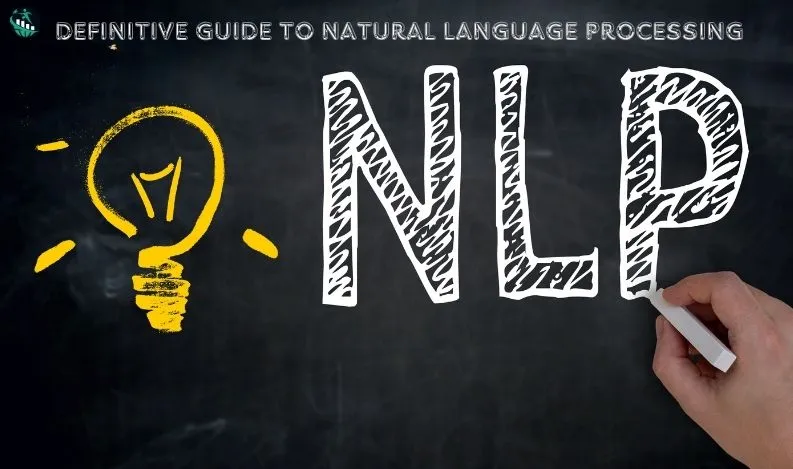
A Gentle Guide to Machine Learning
Machine Learning (ML) is a subfield within Artificial Intelligence (AI) that builds algorithms allowing computers to learn tasks from data rather than being explicitly programmed. This capability to learn from data has revolutionized numerous fields, enabling computers to perform tasks that were once thought impossible.
The Real Thing About Machine Learning
Machine Learning is not all as beautiful as it sounds; it has its limits. While we can't yet build intelligent machines like Data from Star Trek or HAL 9000 from 2001: A Space Odyssey, we do have numerous real-world applications where ML works effectively. Here are some common categories of practical ML applications:
Image Processing
Image processing involves analyzing images to extract data or perform transformations. Examples include:
• Image Tagging: Algorithms automatically detect faces in photos, like on Facebook, where it learns from manually tagged photos.
• Optical Character Recognition (OCR): Converting scanned documents into digital text by recognizing characters in images.
• Self-Driving Cars: Using ML to analyze video frames to identify road edges, stop signs, and approaching vehicles.
Image processing leverages techniques like convolutional neural networks (CNNs), which are particularly effective for analyzing visual data. CNNs can learn hierarchical features from raw pixel data, making them ideal for tasks like object detection and image segmentation. In self-driving cars, for instance, multiple CNNs are used to identify different elements on the road, such as lane markings, pedestrians, and traffic signs.
Text Analysis
Text analysis extracts or classifies information from text data such as tweets, emails, and documents. Examples include:
• Spam Filtering: Classifying emails as spam or not based on content and subject.
• Sentiment Analysis: Classifying opinions in text as positive, neutral, or negative.
• Information Extraction: Extracting specific information like addresses, entities, and keywords from text.
Natural language processing (NLP) techniques, such as tokenization, stemming, and lemmatization, are crucial for text analysis. Tokenization breaks down text into individual words or phrases, while stemming and lemmatization reduce words to their root forms. Advanced models like transformers (e.g., BERT and GPT) have significantly improved the accuracy of tasks like sentiment analysis and information extraction by understanding the context and semantics of language.
Data Mining
Data mining involves discovering patterns or making predictions from data. Examples include:
• Anomaly Detection: Identifying outliers, such as detecting fraudulent credit card transactions.
• Association Rules: Understanding customer purchasing habits by identifying products frequently bought together.
• Grouping: Clustering users by behavior or profile on platforms like SaaS.
• Predictions: Predicting variables such as credit scores from customer profiles.
Data mining utilizes techniques like clustering, classification, and regression. Clustering algorithms, such as K-means and hierarchical clustering, group similar data points together. Classification algorithms, such as decision trees and support vector machines (SVM), categorize data into predefined classes. Regression techniques, like linear regression and logistic regression, predict continuous outcomes based on input features.
Video Games & Robotics
ML is used extensively in video games and robotics, where an agent (character or robot) interacts with an environment. Reinforcement Learning is a popular technique here, where an agent learns tasks through environmental reinforcement (positive for goals, negative for obstacles).
Reinforcement Learning (RL) involves training an agent through trial and error, using rewards and punishments to guide learning. The agent's goal is to maximize cumulative rewards over time. Techniques like Q-learning and deep Q-networks (DQNs) have been successfully applied to video games and robotic control tasks. For example, RL algorithms enable robots to navigate complex environments, avoid obstacles, and perform tasks autonomously.
How Does Machine Learning Work?
Tom Mitchell’s book "Machine Learning" provides a foundational definition: A computer program is said to learn from experience E concerning some tasks T and performance measure P, if its performance at tasks T, as measured by P, improves with experience E.
Example Scenarios
1. Image Recognition: Identifying Barack Obama’s face in an image by learning from tagged photos.
2. Sentiment Analysis: Classifying the sentiment of tweets as positive or negative.
3. Credit Scoring: Predicting a person’s credit score from their profile data.
For each task, you provide training instances or examples (experience E) for the algorithm to learn from. Features representing each instance (e.g., pixel values for images, words in a tweet) are crucial for the learning process.
Categories of Machine Learning Algorithms
ML algorithms fall into two broad categories: Supervised and Unsupervised Learning.
Supervised Learning
Supervised learning involves learning a function that maps an input to an output based on example input-output pairs.
• Classification: The output is a discrete label. Example: Classifying tweets as positive or negative.
• Regression: The output is a continuous value. Example: Predicting a credit score from user data.
Supervised learning requires tagged training data, which can be expensive and time-consuming to gather. Common algorithms include:
• Linear Regression: Predicts a continuous output based on the linear relationship between input features and the target variable.
• Decision Trees: Splits data into subsets based on feature values, creating a tree-like model of decisions.
• Support Vector Machines (SVM): Finds the optimal hyperplane that separates data points of different classes with maximum margin.
Unsupervised Learning
Unsupervised learning involves learning patterns from untagged data. It’s used for clustering and association problems.
• Clustering: Grouping similar instances. Example: Grouping news articles by topic.
• Association: Discovering relationships between variables. Example: Market basket analysis in retail.
Unsupervised learning algorithms include:
• K-means Clustering: Partitions data into K clusters by minimizing within-cluster variance.
• Hierarchical Clustering: Builds a tree-like structure of nested clusters based on data similarity.
• Apriori Algorithm: Identifies frequent itemsets and generates association rules for market basket analysis.
Machine Learning Algorithms
ML involves various algorithms, each with strengths and weaknesses:
Support Vector Machines (SVM)
SVM constructs hyperplanes in a high-dimensional space to separate classes. It’s powerful for both classification and regression tasks. The goal is to find the hyperplane that maximizes the margin between different classes. SVM can handle linear and non-linear data by using kernel functions to map data into higher-dimensional spaces.
Probabilistic Models
These models predict outcomes by modeling the problem with a probability distribution. Naive Bayes classifiers are popular in this category, offering simplicity and good performance. Naive Bayes assumes independence between features, making it computationally efficient and effective for tasks like spam filtering and document classification.
Deep Learning
A subset of ML involving neural networks with many layers. Deep learning excels in tasks like image and speech recognition due to its ability to learn high-level features from raw data. Deep learning architectures, such as convolutional neural networks (CNNs) and recurrent neural networks (RNNs), have achieved state-of-the-art performance in various domains. CNNs are effective for image processing, while RNNs are suitable for sequential data like time series and natural language.
Important Aspects of Machine Learning
Implementing ML involves several critical steps beyond choosing the right algorithm:
Feature Engineering
Feature engineering involves extracting and selecting the most important features to represent training data. High-quality features significantly impact the algorithm’s performance.
• Feature Extraction: Transform raw data into a form the algorithm can process. For images, this might involve converting pixel values into features.
• Feature Selection: Identifying and using the most relevant features to improve model performance and avoid the curse of dimensionality.
Feature engineering is often domain-specific and requires expertise. For example, in image processing, feature extraction might involve edge detection and texture analysis. In text analysis, feature extraction could include word frequency and n-grams.
Training and Testing
Training involves feeding the algorithm with examples to learn from. Testing evaluates the model’s performance on unseen data. Properly splitting data into training and testing sets is crucial to avoid overfitting.
• Cross-Validation: Dividing the data into multiple subsets and training/testing the model on different combinations to ensure robustness.
• Overfitting: Occurs when the model learns noise in the training data, leading to poor generalization on new data. Techniques like regularization and pruning help mitigate overfitting.
Performance Metrics
Metrics like accuracy, precision, recall, and F1 score help evaluate model performance. Confusion matrices provide insights into classification errors.
• Accuracy: The proportion of correctly classified instances.
• Precision: The proportion of true positive predictions among all positive predictions.
• Recall: The proportion of true positive predictions among all actual positives.
• F1 Score: The harmonic mean of precision and recall, providing a balanced measure.
For regression tasks, metrics like Mean Absolute Error (MAE) and Mean Squared Error (MSE) are used to evaluate model performance.
Scalability and Performance
Real-world ML applications require robust and efficient implementations. Training large models demands significant computational resources. Parallel processing and optimized frameworks (e.g., Scikit-learn, TensorFlow) are essential for scalability.
• Hardware Acceleration: Utilizing GPUs and TPUs to accelerate training and inference.
• Distributed Computing: Leveraging distributed systems like Apache Spark for large-scale data processing.
Final Words
Machine Learning is a powerful yet complex field, requiring a blend of domain knowledge, technical skills, and creativity. While challenges abound—from data quality to model selection—advances in ML continue to unlock new possibilities across industries. Understanding the foundational concepts and techniques of ML is the first step toward harnessing its potential.
Hope you enjoyed this guide! Feel free to reach out with any questions or comments.
Also Read:-







Recent Comments: